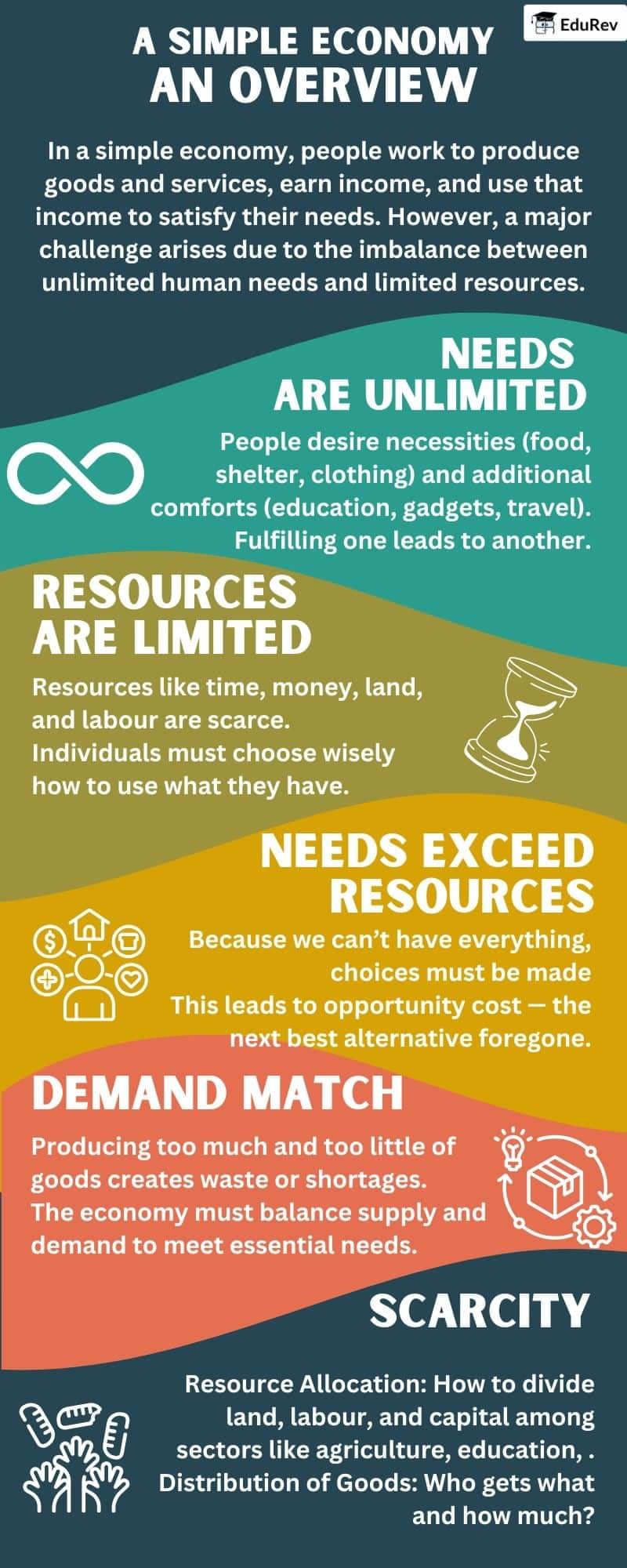Commerce Exam > Commerce Notes > Economics Class 11 > Learning Poster: Introduction to Microeconomics
Learning Poster: Introduction to Microeconomics | Economics Class 11 - Commerce PDF Download

The document Learning Poster: Introduction to Microeconomics | Economics Class 11 - Commerce is a part of the Commerce Course Economics Class 11.
All you need of Commerce at this link: Commerce
|
59 videos|290 docs|51 tests
|
FAQs on Learning Poster: Introduction to Microeconomics - Economics Class 11 - Commerce
| 1. What is microeconomics and how does it differ from macroeconomics? |  |
Ans.Microeconomics is the branch of economics that studies individual agents, such as households and firms, and their decision-making processes regarding the allocation of resources. It focuses on supply and demand, price determination, and how these elements interact within specific markets. In contrast, macroeconomics deals with the economy as a whole, analyzing aggregate indicators like GDP, unemployment rates, and inflation. While microeconomics looks at the small picture, macroeconomics provides a broader overview of economic trends and policies.
| 2. What are the key concepts of microeconomics that students should understand? |  |
Ans.Key concepts of microeconomics include supply and demand, elasticity, consumer behavior, production and costs, market structures (such as perfect competition, monopoly, and oligopoly), and welfare economics. Understanding these concepts helps students analyze how individual choices impact market outcomes and the overall economy. Additionally, knowledge of marginal analysis, opportunity cost, and the role of incentives is crucial for grasping microeconomic principles.
| 3. How does the law of demand work in microeconomics? |  |
Ans.The law of demand states that, all else being equal, as the price of a good or service decreases, the quantity demanded by consumers increases, and vice versa. This inverse relationship occurs because lower prices make a product more attractive to buyers, leading to increased consumption. Graphically, the demand curve slopes downward from left to right, illustrating this relationship. Factors such as consumer preferences, income, and substitutes can also influence demand.
| 4. What is the significance of elasticity in microeconomics? |  |
Ans.Elasticity measures how responsive the quantity demanded or supplied of a good is to changes in price or other factors. Price elasticity of demand, for example, indicates how much the quantity demanded changes in response to a price change. A high elasticity value suggests that consumers are very responsive to price changes, while a low value indicates they are less sensitive. Understanding elasticity helps businesses and policymakers make informed decisions about pricing, production, and taxation.
| 5. How do market structures affect pricing and output decisions in microeconomics? |  |
Ans.Market structures, including perfect competition, monopolistic competition, oligopoly, and monopoly, significantly influence pricing and output decisions. In perfect competition, numerous firms produce identical products, leading to price-taking behavior. In contrast, a monopoly allows a single firm to set prices and control output. Oligopoly features a few dominant firms whose decisions are interdependent, affecting pricing strategies. Understanding these structures helps analyze how market power and competition shape economic outcomes.
Related Searches
















